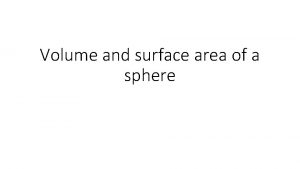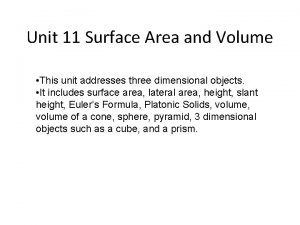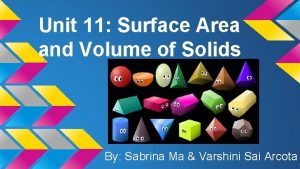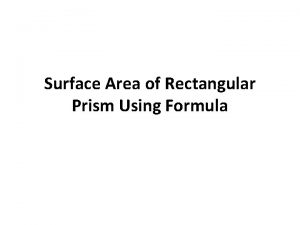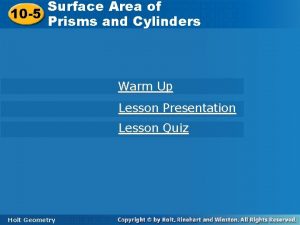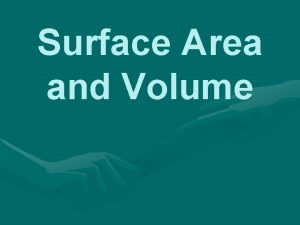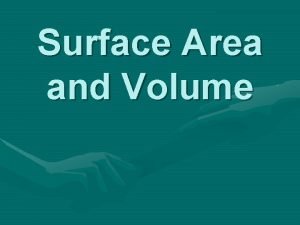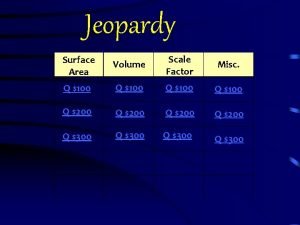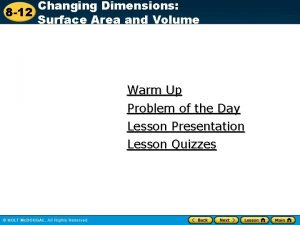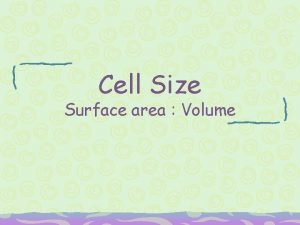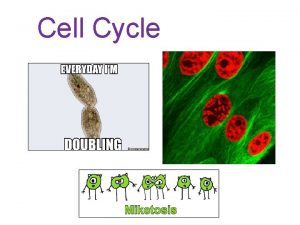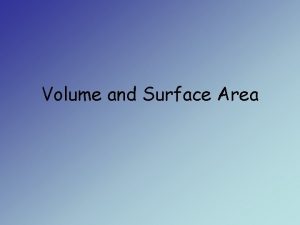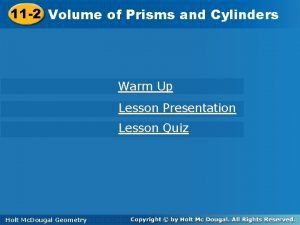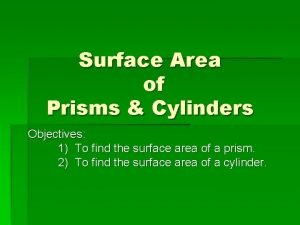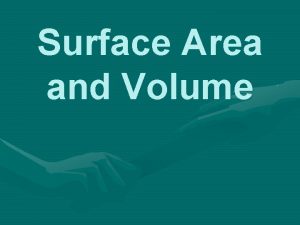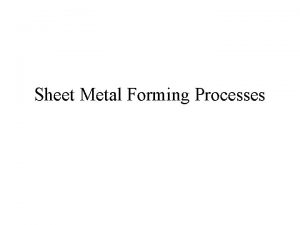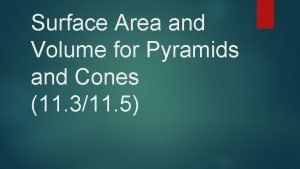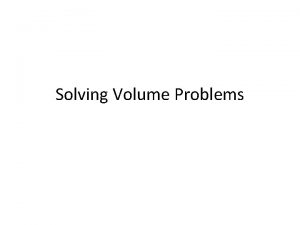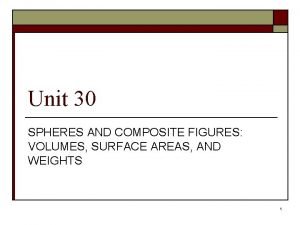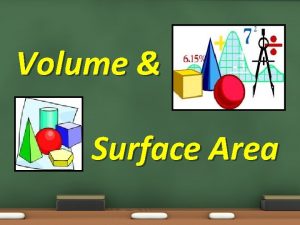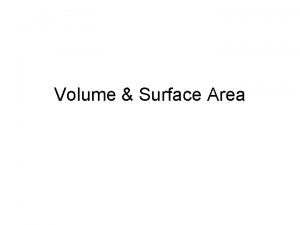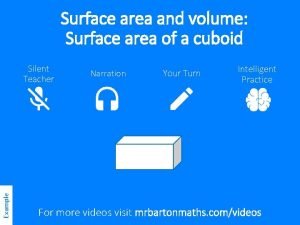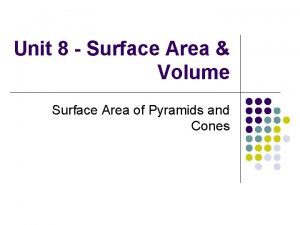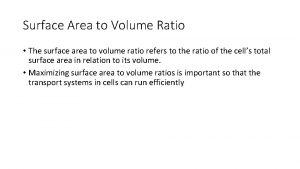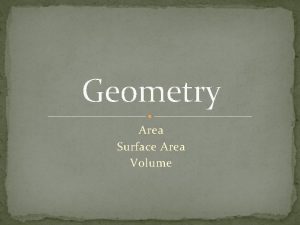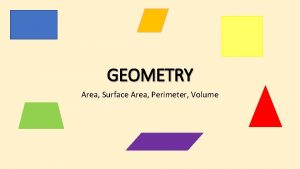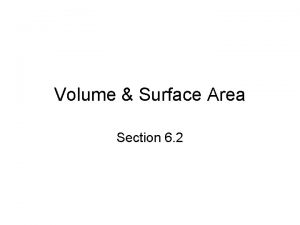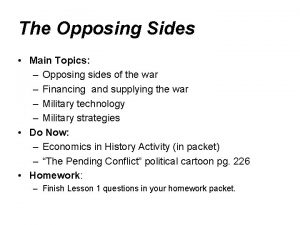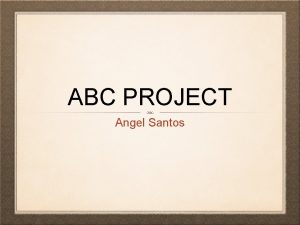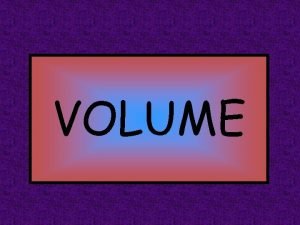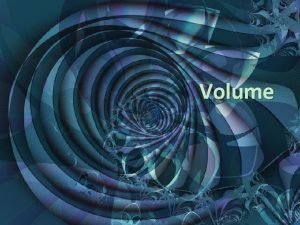Surface Area Volume Surface Area all sides of



































- Slides: 35

Surface Area: Volume Surface Area: all sides of a shape – – Area of the walls of an object – How much Exposed area an object has Volume: length x width x height – Amount an object can hold – Amount of space something takes up Why is the surface area to volume ratio important to digestion?

DIGESTION

Each organism on Earth has a digestive system that is adapted to the type of food that the organism obtains

Food provides source of raw materials & cellular energy • Essential to growth and maintaining homeostasis Most food particles are MUCH LARGER than organisms are able to digest; • Must break down into smaller particles to allow for the release of energy • Process of DIGESTION Heterotrophs must break down large food particles into macromolecules such as… • Proteins, • Carbohydrates • Lipids

Digestion = Process by which food breaks down into molecules that an organism can absorb or use Two parts to Digestion: 1. Physical/Mechanical Digestion = Physically breaking down large pieces of food into smaller ones – Chewing, grinding of food – the size of the particles, – the surface area of food 2. Chemical Digestion = breaking down complex food molecules into simpler ones – Enzymes – W/O chemical digestion, large food molecules could not be absorbed/used

Two Types of Digestions Extracellular Digestion = Digestion outside of cells – Most animals (inc. humans) – Secrete digestive enzymes into digestive cavity, initiating chemical digestion – Digestive tract is open to outside environment – Body controls what enters and leaves the system

Two Types of Digestion Intracellular Digestion = Breakdown of nutrients inside the cell Plant digestion inside plant cells – with foods plant has made itself – Single cell organisms – Some have ability to catch prey; secrete enzymes to digest • Some organisms secrete enzymes to digest food outside the organism, and then absorb nutrients into the cells – Ex. – Fungi & Molds

Digestion for a Complex Multicellular Animal – Special cavities / Digestive tubes - 2 openings – Enters mouth; food not digested leaves anus – One way movement Digestion system is divided into different regions with specialized functions • Diet of animal depends on special digestion required • Ruminant digestion Some animals have microorganisms inside special pockets that help digest difficult substances, such as cellulose – Animals that don’t have microorganisms, like Humans, cannot digest cellulose – Ex. - Termites

Human Digestion Four parts to Human Digestion: • Ingestion • Digestion • Absorption • Elimination Digestive Tract – A. K. A. Alimentary Canal

Ingestion = Eating/process of taking food into the digestive tract Begins in oral cavity/Mouth – Chewing begins Mechanical Digestion – Food mixes with Saliva = watery secretion containing digestive enzymes;

Digestive System in the Human Body

Teeth

Ingestion Saliva Components that help Chemical Digestion • Salivary Amylase = Carbohydrates • Bicarbonate = Neutralize acidic foods • Mucous = Helps form Bolus (to swallow) – Bolus = small round lump/mass of chewed food Why is Mechanical Digestion crucial? • Mech. Digestion RAISES the SA: Volume ratio • Enhances Chemical digestive ability through small pieces

Digestion = the process of breaking food down into molecules small enough for the body to absorb • Food moves from the mouth to the – Epiglottis = Flap of muscle tissue that prevents food/liquids from entering the trachea • Bolus moves via – Peristalsis = Wavelike contractions of smooth muscle that moves food through the alimentary canal • Helps food move down the Esophagus = channel from pharynx to the stomach – ~9 m of digestive tract – Alimentary Canal (Digestive Tract) is Lined with Smooth Muscle

Digestion / Absorption Cardiac Sphincter = Valve between esophagus and stomach Bolus Reaches the Stomach = large organ that stores food/major function is protein digestion Contractions in stomach muscle lining break food up, mix food Gastric Juices = Secretions from glands that help chemically break down food – Examples: Enzymes, mucus, acid


Stomach The stomach is HIGHLY acidic – Gastrin = hormone released in stomach to assist in digestion – Signaler to start HCL secretion via glands • (HCL – p. H 3) Helps breakdown of stomach contents – Glands in stomach ALSO secrete Mucus • Mucus inhibits breakdown of living tissue/stomach lining Also relies on enzyme Pepsin • Pepsinogen released into stomach • p. H 3 environment breaks down shape of Pepsinogen into Pepsin (active form) – Breaks down Proteins Why so acidic? Enhance protein digestion via Pepsin by first denaturing proteins Kills bacteria

Stomach Ulcer

The Stomach and Accessory Digestive Organs

Absorption = where animal cells take up small molecules; amino acids, simple sugars Small amounts of partially digested food slowly released from stomach flow into small intestine via… Pyloric Sphincter = Valve between stomach and small intestine – Bolus now given new name… – Chyme = thick semi-fluid mass of partly digested food Small Intestine = section of digestion that controls digestion, absorption; regulates pancreatic solutions – ~Six Meters long – Food mol absorbed

Small Intestine • Duodenum – Primary site of digestion! – Site where chemical digestion is completed • Jejunum & Ileum – More digestion Food remains 3 -10 hours in the small intestine Muscle contractions to mix the food with digestive juices – ~95% of digestion takes place here Why is the small intestine SIX METERS LONG?

Why is the small intestine SIX METERS LONG? Relate back to Surface Area: Volume Ratio… Cells need to absorb small molecules – Use for free energy, raw materials/cell structures Molecules pass through cells lining the small intestine

Villi in the Small Intestine

Cross Section of the Small Intestine

Small Intestine Small molecules pass through cells lining the small intestine – Small intestine features… – Villi = millions of finger-like projections • Each Villus (singular) contains capillaries – tiny thin walled blood vessels that serve as entry points to the blood stream • Simple sugars, AA, fatty acids, some glycerol and minerals all pass through cells of villi and enter blood stream via capillaries

Small Intestine Blood carries sugars, fats, and proteins from digestion to the cells • Inside cells, molecules are broken down further for energy / Synthesize substances for Development Villi / each villus in the small intestine, increases the surface area for absorption This helps increase the rate of transfer of essential molecules to the cells of the body.

Liver/Gallbladder/Pancreas contribute to digestive juices of Small Intestine through DUCTS (Not this ) Liver = HUGE organ in the upper abdomen; MASSIVE • Aids in digestion • Produces/Secretes Bile = Breaks up fats Gallbladder= Stores Bile • Salts in Bile break down fat molecules • Increases surface area/volume ratio of particles to be broken

Liver/Gallbladder/Pancreas = Function in Digestion; Secretes pancreatic juices (enzymes) that help digest food in the small intestine • Gland that secretes Pancreatin – Bicarbonate (Basic) – Trypsin – Carboxypeptidase – Pancreatic Amylase – Lipase – Nuclease

Liver, Gallbladder, Pancreas

Absorption • Food molecules are absorbed through intestinal walls into bloodstream – Blood carries mol to cells; use in metabolism Large Intestine = site of re-absorption of water; indigestible waste accumulation

Large Intestine Unusable parts of digestive material passes to Large Intestine – Has Bacteria • produce several vitamins, gases, other compounds – Location where vitamins/ions/water are absorbed

Elimination = Removal of indigestible material from the digestive tract – Waste is dried out through absorption in the Large Intestine • Forms Feces = – Feces is eliminated through anus • Organs of Digestion Animation

Macromolecules - Carbohydrates Where does Carbohydrate digestion begin? The Mouth Action of salivary amylase digests starches Smaller polysaccharides by breaking chemical bonds • Saliva p. H -> 6. 0 – 7. 4; • stomach p. H 1. 0 -3. 5, • THUS - no carb digestion in stomach Carb digestion finishes in the Small Intestine – – Parcreatic juices converting acidic food to basic p. H Salivary amylase is broken down further Most starch digested in S. I. Final result = MONOSACCHARIDES

Macromolecules - Proteins As food enters stomach, stomach cells signaled to release Gastrin – Signaler to start HCL secretion – HCL in stomach will help DENATURE proteins • Creates SA for Pepsin to break down the denature proteins into smaller chains of amino acids. When food enters SI, the pancreas produces Bicarbonate that shifts the p. H from Acidic to Basic • Trypsin breaks down amino acid chains into single amino acids.

Macromolecules - Lipids Digested in the small intestine • Do not mix with water, enzymes digest only the molecules on the surface of the fat droplets • Prepared for digestion by Bile – Bile salts break down fat droplets, – Increase fat surface area for fat-digesting pancreatic enzymes • Bile DOES NOT contain digestive enzymes – Lipase – A fat digesting enzyme, is secreted in the pancreatic/intestinal juices; • Splits fats into FA and glycerol • Fat Absorption Animation
 How to calculate lateral surface area
How to calculate lateral surface area Volume and surface area of cone
Volume and surface area of cone Stage left vs stage right
Stage left vs stage right Formula of hemisphere
Formula of hemisphere Ateral surface area
Ateral surface area Unit 11 volume and surface area
Unit 11 volume and surface area Formula of area of a rectangle
Formula of area of a rectangle Volume of prisms and cylinders quiz part 1
Volume of prisms and cylinders quiz part 1 Prism volume and surface area
Prism volume and surface area Perimeter of a cone
Perimeter of a cone Volume = 1/3 bh
Volume = 1/3 bh Area of sectors maze
Area of sectors maze Importance of surface area to volume ratio
Importance of surface area to volume ratio What is the name
What is the name Surface area and volume jeopardy
Surface area and volume jeopardy Volume of rectangular prism jeopardy
Volume of rectangular prism jeopardy Extending surface area and volume
Extending surface area and volume Surface area of half a cylinder formula
Surface area of half a cylinder formula Surface area of prism and cylinder worksheet
Surface area of prism and cylinder worksheet Volume of cuboid worksheet
Volume of cuboid worksheet Effects of changing dimensions on surface area and volume
Effects of changing dimensions on surface area and volume Cell surface area definition
Cell surface area definition Surface area to volume ratio
Surface area to volume ratio Rectangular prism template
Rectangular prism template Objectives of surface area and volume
Objectives of surface area and volume Halimbawa ng prism
Halimbawa ng prism Quiz 11-2 volume and surface area
Quiz 11-2 volume and surface area Dr frost volume and surface area
Dr frost volume and surface area Prisms and cylinders
Prisms and cylinders Unfolded rectangular prism
Unfolded rectangular prism Surface area to volume ratio in bulk deformation process
Surface area to volume ratio in bulk deformation process Doctor frost maths
Doctor frost maths Volume equation
Volume equation Surface area of pyramids and cones answer key
Surface area of pyramids and cones answer key Triangular prism formula
Triangular prism formula Composite solid figures
Composite solid figures



